On February 2, 1943, the Battle of Stalingrad in south-west Russia ended with the surrender of the German Wehrmacht. Today the Kremlin uses the commemoration for the Ukraine campaign and draws parallels.

Half frozen, half starving, demoralized: German soldiers in January 1943 in the destroyed Stalingrad
Actually, the Russian industrial city on the Volga was only intended for the German Wehrmacht as a stage in order to conquer the oil fields of the Caucasus. Because of the name – today the city is called Volgograd – Stalingrad had a meaning that went beyond the strategic for both the German dictator Adolf Hitler and his Soviet opponent Josef Stalin.
Because of the very long The German offensive of the 6th Army under General Friedrich Paulus on Stalingrad was risky from the outset in terms of supply routes. It begins in mid-August 1942 with initially spectacular successes, a good year after the German attack on the Soviet Union, which got stuck in the winter of 1941/42.
At the beginning of the offensive on Stalingrad, Hitler says: “The Russians are at the end of their strength.” That would prove to be a big mistake. Despite strong resistance, the Wehrmacht was able to take most of the city by mid-November. At the same time, however, the Red Army launches a pincer attack.
By the end of November, the entire 6th Army of the Third Reich and parts of the 4th Panzer Army supporting it were already surrounded, almost 300,000 men. On Hitler's orders, however, they absolutely had to hold the fort. Similarly, Stalin had already issued the order “Don't step back” in July.
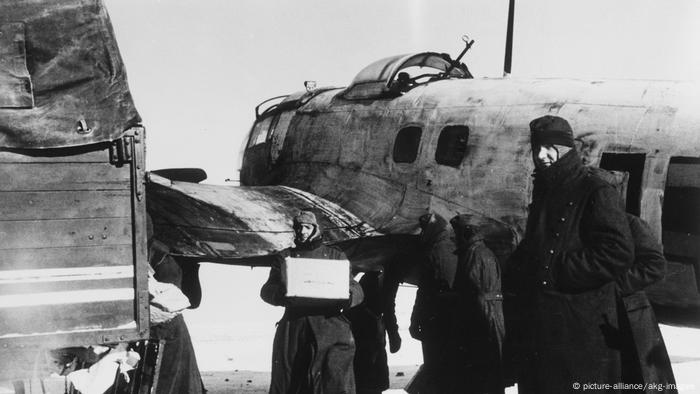
Wehrmacht soldiers unloading a transport plane (Winter 1942/43): Airlift completely inadequate
The German soldiers are surrounded. Her situation is rapidly deteriorating. They are supplied for weeks with a large-scale airlift.
But the transports are never enough. With the advancing Red Army, less and less arrives. During the winter it gets cold to minus 30 degrees. Therefore, most of the encircled German soldiers do not die from combat operations, but from malnutrition and cold. The so-called “relief offensive” promised over and over again failed.
Paul only resisted at the very end
Despite this, General Paulus still obeyed Hitler's strict order to hold out “to the last soldier” and on January 8, 1943, rejected a Soviet offer of surrender. On January 29 – the situation is already completely hopeless – Paulus radios to Hitler: “On the anniversary of your assumption of power, the 6th Army greets its leader. The swastika flag is still flying over Stalingrad. May our struggle live and be with the generations to come be an example of never capitulating even in the most hopeless situation, then Germany will win. Heil mein Führer!”
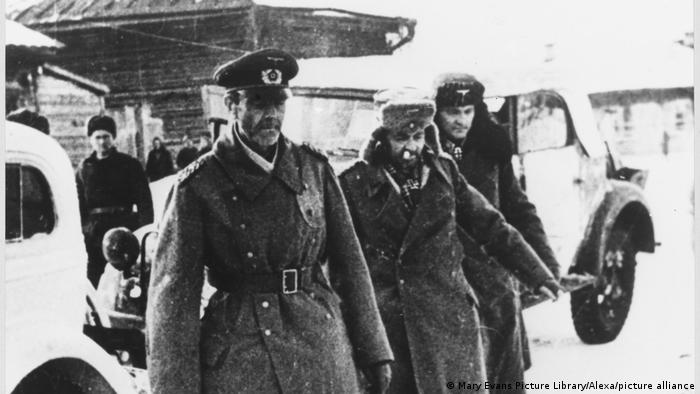
Prisoner of war Paul (left) with his chief of staff and an adjutant after surrender on January 31, 1943
But Paul's loyalty is not unlimited. When the Red Army broke into his headquarters in the basement of a department store on January 31, the commander was taken prisoner. He also forbade his officers to commit suicide because they should share the fate of the common soldiers.
The Stalingrad Pocket is now divided into a southern and a northern pocket. After the southern pocket, the northern pocket also capitulated on February 2, 1943. Therefore, today, February 2, in Russia is the commemoration day of the battle. The German soldiers are taken prisoner. Hitler is beside himself when he learns of the capitulation.
Incredible death toll
The balance of the battle: more than half a million dead on the Soviet side, including many civilians. Stalin had prevented the city from being evacuated for a long time. Already in the first days more than 40,000 citizens of Stalingrad are killed by German air raids.
And the army of the German Nazi regime, particularly on the Eastern Front, is also brutal on civilians. Of the approximately 75,000 who remain until the end of the fighting, many starve or freeze to death. On the German side, estimates of the dead vary between 150,000 and 250,000. Of the almost 100,000 Germans who were taken prisoner of war by the Soviets, only about 6000 survivors returned to Germany by 1956, including Friedrich Paulus.

Wreckage of a German plane in the ruins of the completely destroyed city
For the German Wehrmacht it was not even the most costly battle of the Second World War, nor was it the most important battle in purely military terms, but psychologically it had it is of immense importance. Also because it was seen as a prestige duel by both Stalin and Hitler.
“We are defending our mother Russia at Stalingrad,” wrote the Soviet writer Ilya Ehrenburg at the time. “It really is a matter of life and death, and our prestige, like that of the Soviet Union, depends to a large extent on its outcome,” Hitler's propaganda minister Joseph Goebbels noted. The battle was to be the great turning point in World War II. At the latest since this defeat, Hitler's Germany has been more and more on the defensive.
Stalingrad and the Ukraine War
The Battle of Stalingrad, victorious for the Soviet Union, became a myth. The army of Nazi Germany, long considered the strongest army in the world, had been decisively defeated.
And the Russian leadership is making use of this myth again today – of all things in the war against Ukraine. For months, the Kremlin has been trying to portray the operation in Ukraine as a new fight against Nazis at the head of the Ukrainian state, who wanted to exterminate the Russian-speaking population in eastern Ukraine. As soon as he gave the order to attack, President Vladimir Putin announced that he would “denazify” Ukraine.
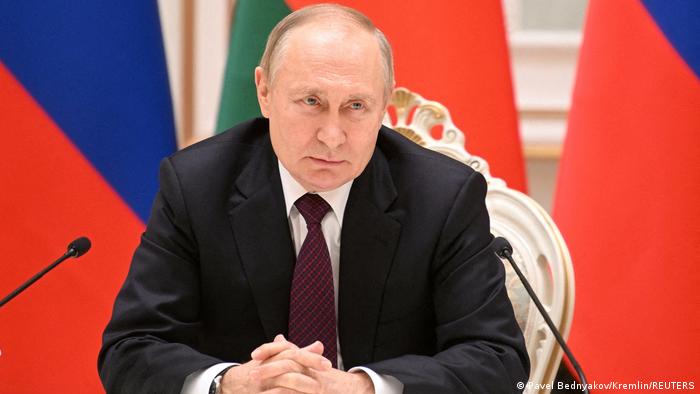
President Vladimir Putin has repeatedly spoken of wanting to “denazify” Ukraine
The Stalingrad Museum in today's Volgograd is also included in this presentation. For years, the museum has hosted one of the most visited exhibitions in Russia. It has now organized celebrations for the families of Russian soldiers who died in Ukraine. The museum also hosted a ceremony of the Defense Ministry-sponsored Patriotic Youth Army, praising children as “descendants of the Stalingrad victors.” The well-known war memorials of Volgograd also became meeting points for soldiers on their way to Ukraine.
Putin's attribution “Nazis” can be seen by the Ukrainian leadership as a mere pretext for his war of aggression. And the parallels he drew between today and 80 years ago are historically untenable. The decisive difference: In 1941 the Soviet Union was attacked by Nazi Germany – 2022 the successor state Russia attacked the neighboring country Ukraine without being threatened itself.
New Stalin bust unveiled
How differently the past is viewed in Russia and Ukraine is also evident when assessing the person of Joseph Stalin: The 80th anniversary of the Battle of Stalingrad was now a new bust of the former Soviet dictator unveiled – in Volgograd, renamed after his death because of Stalin's reign of terror that killed millions of people.
In Ukraine, Stalin is considered the originator of the so-called Holodomor (“Murder by Hunger”). In the years 1932 and 1933 in the Ukraine alone, up to four million people fell victim to a severe famine, which, according to the prevailing Ukrainian opinion, was deliberately brought about in order to break the resistance of Ukrainian peasants to their forced collectivization The German Bundestag and the European Parliament also see it, both of which classified the Holodomor as a genocide at the end of last year.
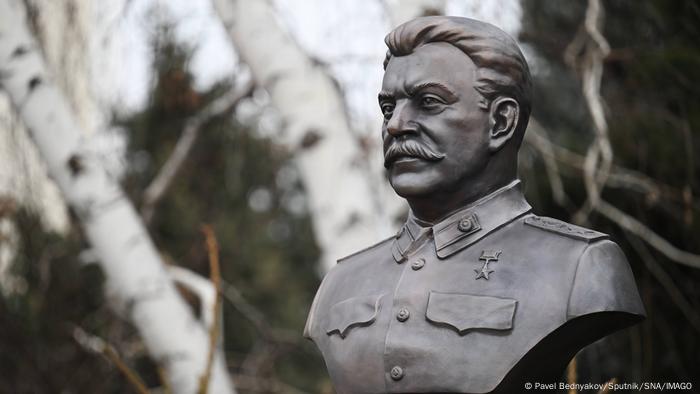
On the 80th anniversary of the battle, a new bust of Stalin was unveiled in Volgograd
The reaction from Moscow at the time: The members of the Bundestag “decided to defiantly support this political and ideological myth, which is being cultivated by the Ukrainian authorities at the instigation of ultra-nationalist, Nazi and Russophobic forces,” according to the Russian Foreign Ministry.
Joint German-Russian military cemetery
So far, Russian and German authorities have worked together on the dead of the Battle of Stalingrad. Bodies and entire mass graves found, of course also the bodies of German soldiers.
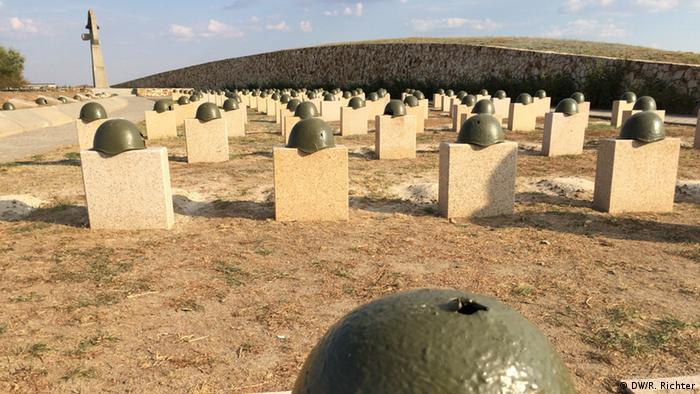
Military cemetery in Rossoshka: German and Russian Soldiers' graves, only divided by a small street
Thanks to the cooperation between the German War Graves Commission and the Russian authorities, the mortal hen remains were reburied in official military cemeteries such as Rossoshka outside of Volgograd. Soldiers of the German Wehrmacht and members of the Red Army are buried here, separated by a road but in a common cemetery.
This is an updated article from 02.02.2018